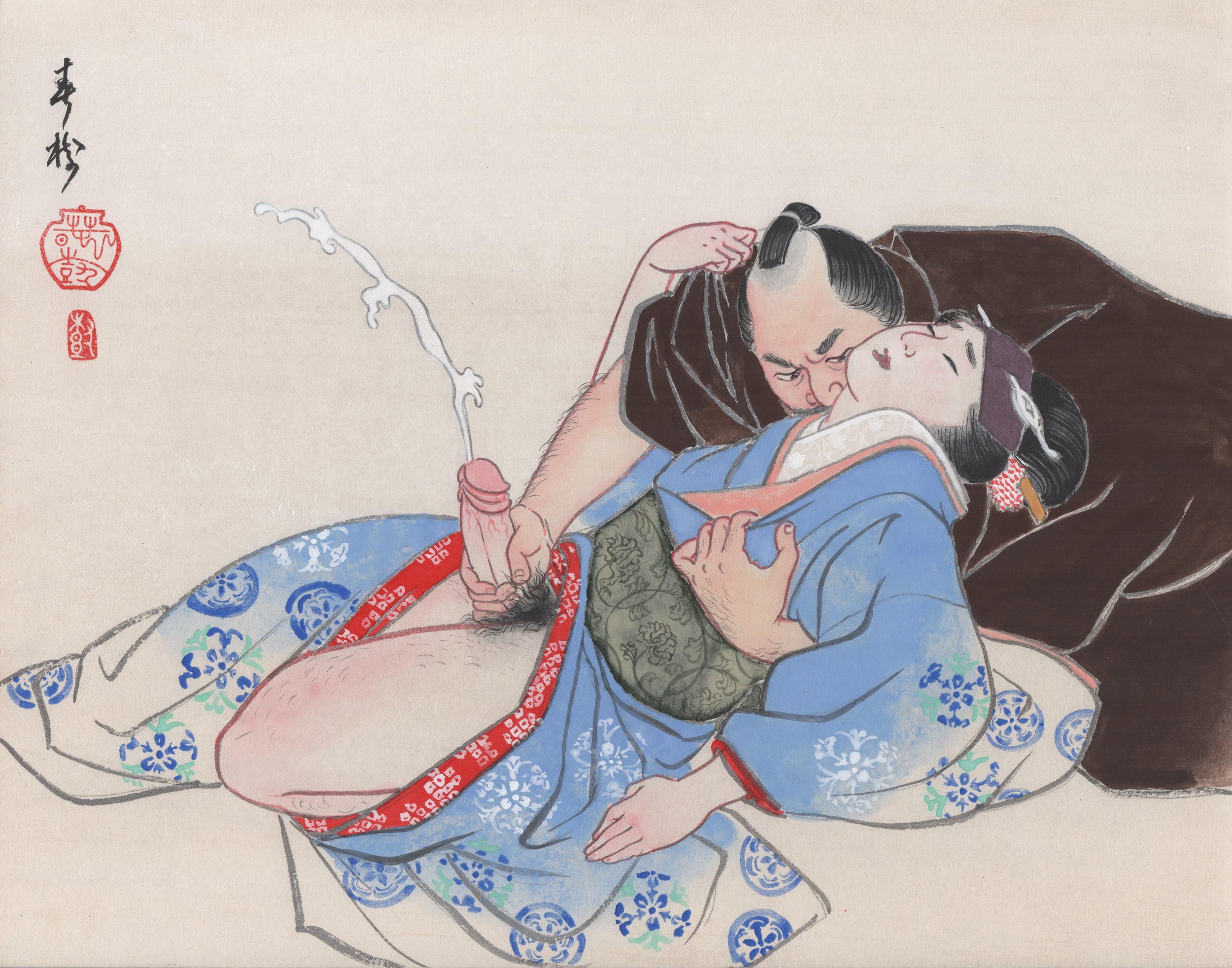 Image 1 of 5
Image 1 of 5

 Image 2 of 5
Image 2 of 5

 Image 3 of 5
Image 3 of 5

 Image 4 of 5
Image 4 of 5

 Image 5 of 5
Image 5 of 5






Onnagata and Samurai- High Quality Art Print
In the Edo period, women were banned from performing kabuki because of their salacious performances on stage and their prostitution offstage. The shogunate viewed their performances as “morally corrupting” and fights would frequently break out between patrons over the female actors. As a result, female roles in kabuki plays were replaced by young men. The men who impersonate women on stage in kabuki are known as onnagata. Contrary to the Shogunate’s attempt to control the prostitution of kabuki actors, the young onnagata became extremely popular for performing erotic plays and continued to be popular prostitutes among both male and female patrons. To control the prostitution, the shogunate also banned young men from the stage by forcing all actors to shave their forelocks in the style of adult men (thus taking away their youthful sexual appeal). Actors were also forbidden from wearing katsura wigs on stage. To continue playing female roles, actors would place a purple scarf or murasaki bōshi to cover the shaved portion of the head. This purple scarf also eventually became a symbol of eroticism. Even though the ban on katsura has since been lifted, you can still sometimes see the purple scarf used on modern kabuki wigs as a nod to its historical use.
This open edition art print is made on a finely textured Hahnemühle paper with pigmented archival inks to ensure the longevity and quality of the print. Although they are open edition, these prints will still come hand signed and titled.
These first-class prints are made by an ArtSure certified printer to guaranty that the prints are made with only the best materials.
In the Edo period, women were banned from performing kabuki because of their salacious performances on stage and their prostitution offstage. The shogunate viewed their performances as “morally corrupting” and fights would frequently break out between patrons over the female actors. As a result, female roles in kabuki plays were replaced by young men. The men who impersonate women on stage in kabuki are known as onnagata. Contrary to the Shogunate’s attempt to control the prostitution of kabuki actors, the young onnagata became extremely popular for performing erotic plays and continued to be popular prostitutes among both male and female patrons. To control the prostitution, the shogunate also banned young men from the stage by forcing all actors to shave their forelocks in the style of adult men (thus taking away their youthful sexual appeal). Actors were also forbidden from wearing katsura wigs on stage. To continue playing female roles, actors would place a purple scarf or murasaki bōshi to cover the shaved portion of the head. This purple scarf also eventually became a symbol of eroticism. Even though the ban on katsura has since been lifted, you can still sometimes see the purple scarf used on modern kabuki wigs as a nod to its historical use.
This open edition art print is made on a finely textured Hahnemühle paper with pigmented archival inks to ensure the longevity and quality of the print. Although they are open edition, these prints will still come hand signed and titled.
These first-class prints are made by an ArtSure certified printer to guaranty that the prints are made with only the best materials.
In the Edo period, women were banned from performing kabuki because of their salacious performances on stage and their prostitution offstage. The shogunate viewed their performances as “morally corrupting” and fights would frequently break out between patrons over the female actors. As a result, female roles in kabuki plays were replaced by young men. The men who impersonate women on stage in kabuki are known as onnagata. Contrary to the Shogunate’s attempt to control the prostitution of kabuki actors, the young onnagata became extremely popular for performing erotic plays and continued to be popular prostitutes among both male and female patrons. To control the prostitution, the shogunate also banned young men from the stage by forcing all actors to shave their forelocks in the style of adult men (thus taking away their youthful sexual appeal). Actors were also forbidden from wearing katsura wigs on stage. To continue playing female roles, actors would place a purple scarf or murasaki bōshi to cover the shaved portion of the head. This purple scarf also eventually became a symbol of eroticism. Even though the ban on katsura has since been lifted, you can still sometimes see the purple scarf used on modern kabuki wigs as a nod to its historical use.
This open edition art print is made on a finely textured Hahnemühle paper with pigmented archival inks to ensure the longevity and quality of the print. Although they are open edition, these prints will still come hand signed and titled.
These first-class prints are made by an ArtSure certified printer to guaranty that the prints are made with only the best materials.